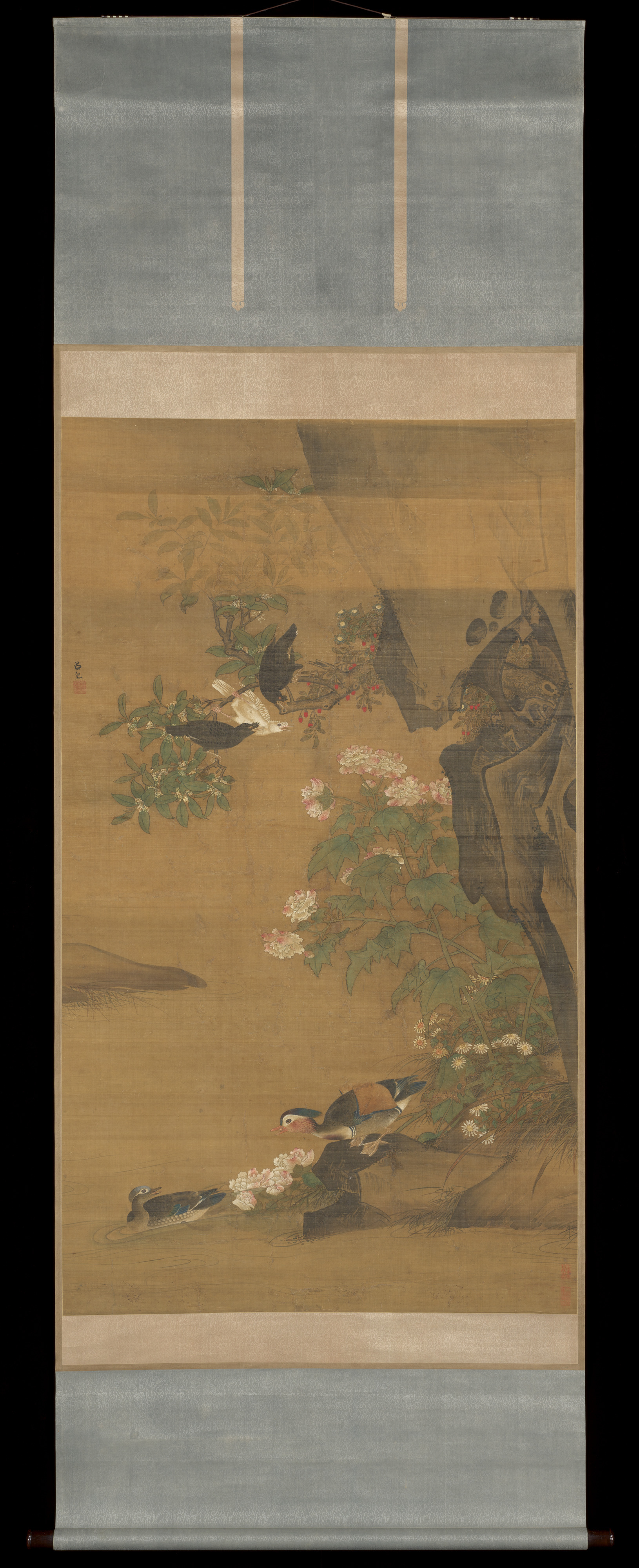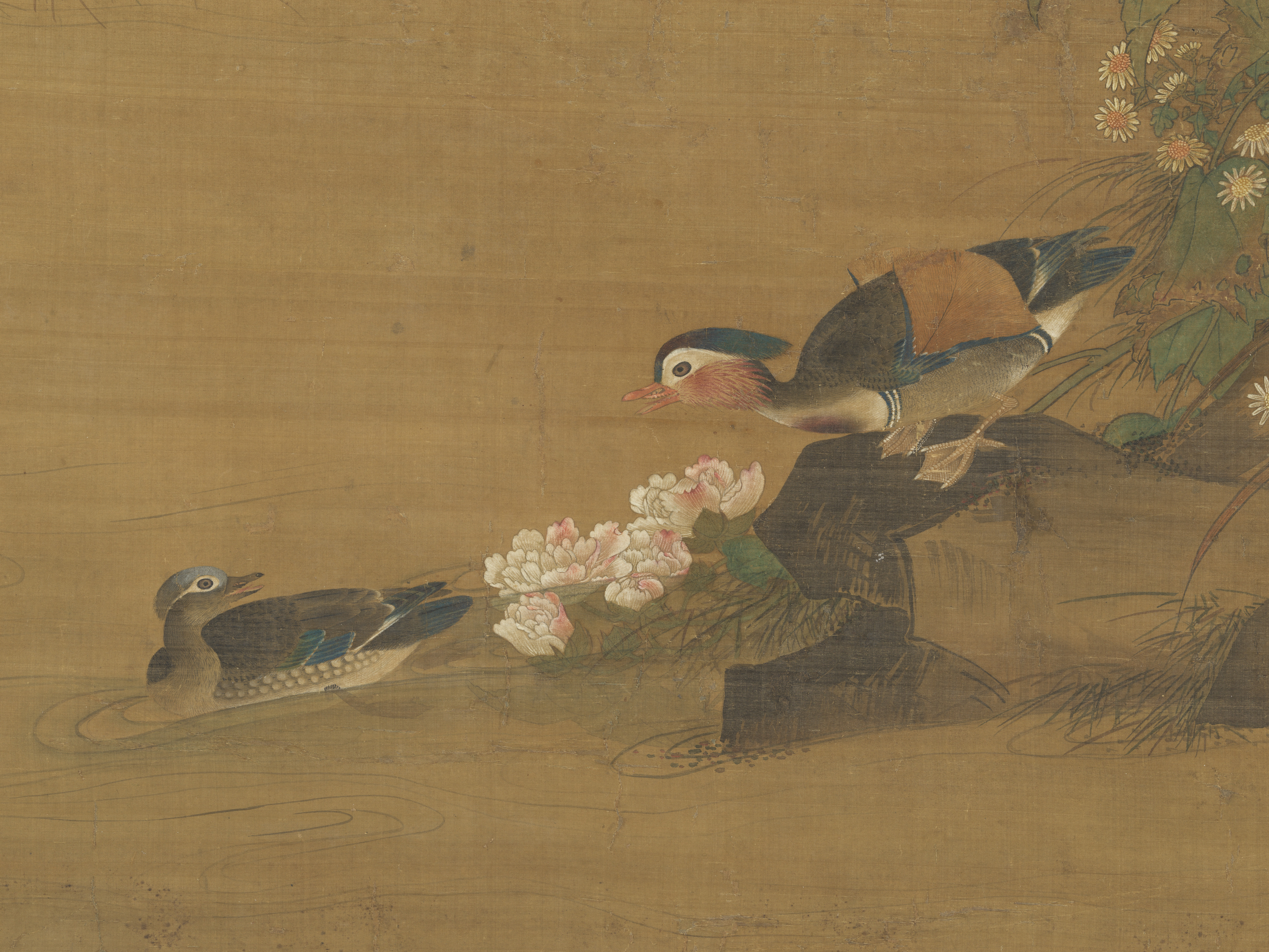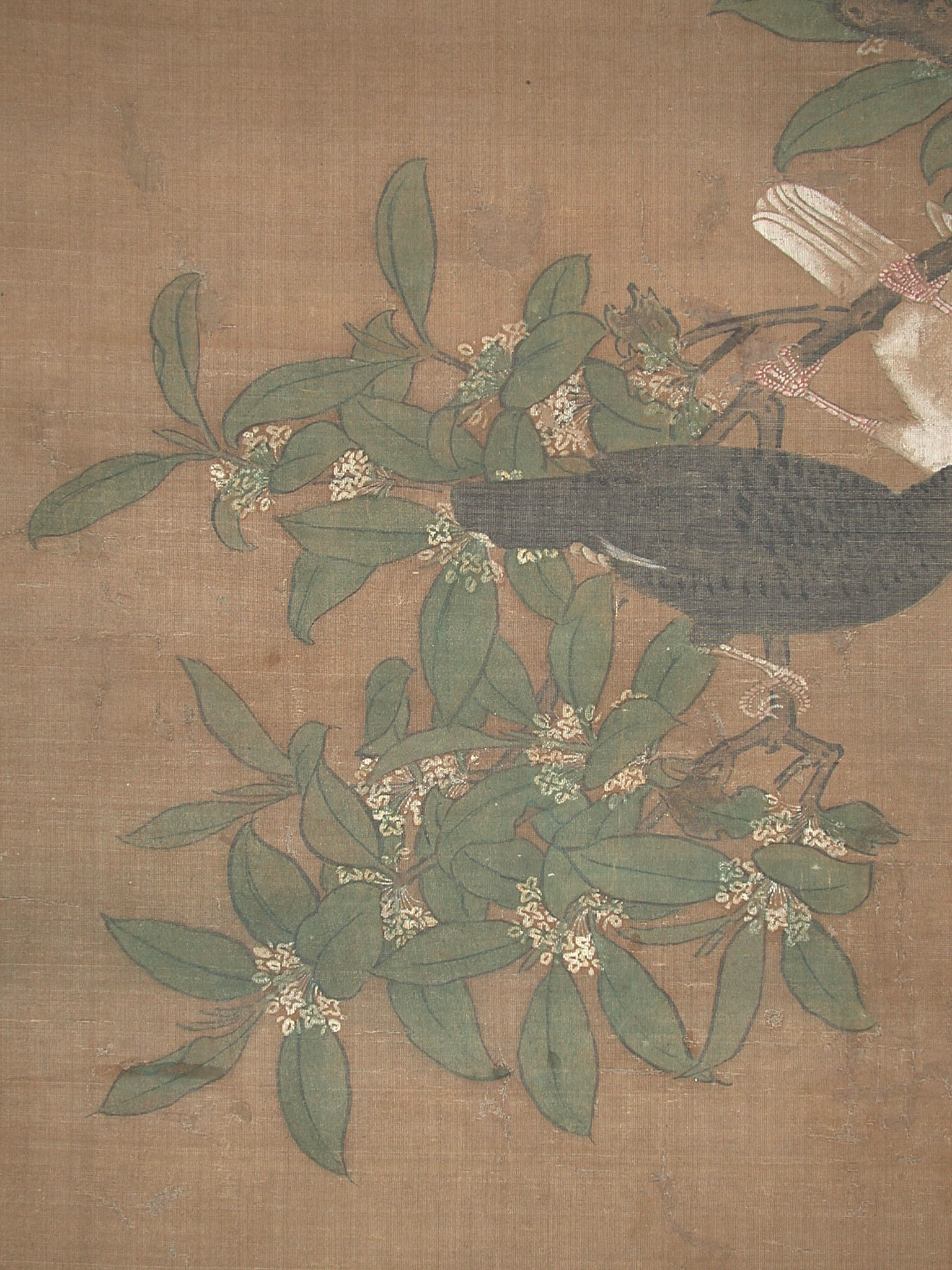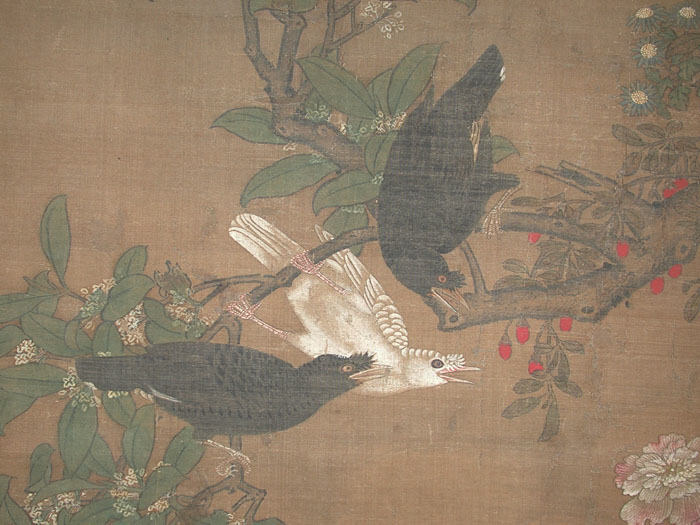Mandarin ducks and cotton rose hibiscus
Lü Ji Chinese
Not on view
Big, colorful, and dazzling, this painting demonstrates why Lü Ji became the most revered bird-and-flower painter at the court of the Ming emperor Hongzhi (r. 1488–1505). Hung in a palace, this work would have added a splash of pizzazz, brightening the interior space with the vitality of the natural world. Like most of Lü’s paintings, this one also has a symbolic dimension: the pair of mandarin ducks in the foreground connote a happy marriage, while the surrounding flowers form rebuses (visual puns) that underscore the message. For instance, the word for “hibiscus” (furong 芙蓉) combines with “cassia” (gui 桂) to form the rebus furong qigui 夫榮妻貴, meaning “prosperous groom, honorable bride”—the perfect painting to celebrate a wedding.
Due to rights restrictions, this image cannot be enlarged, viewed at full screen, or downloaded.
This artwork is meant to be viewed from right to left. Scroll left to view more.







